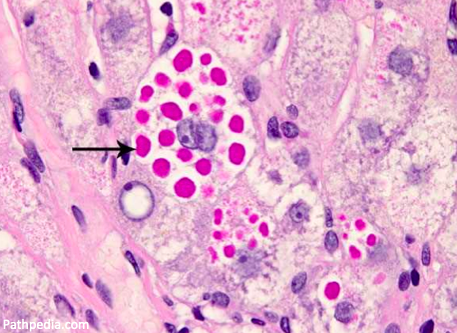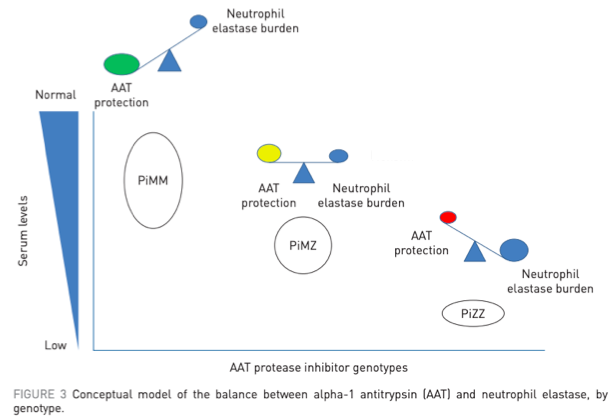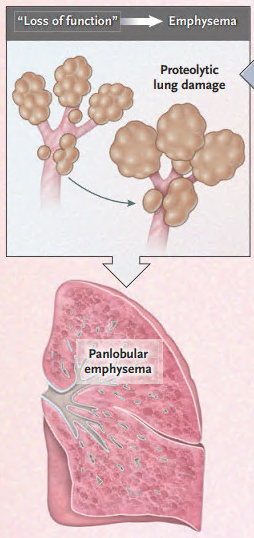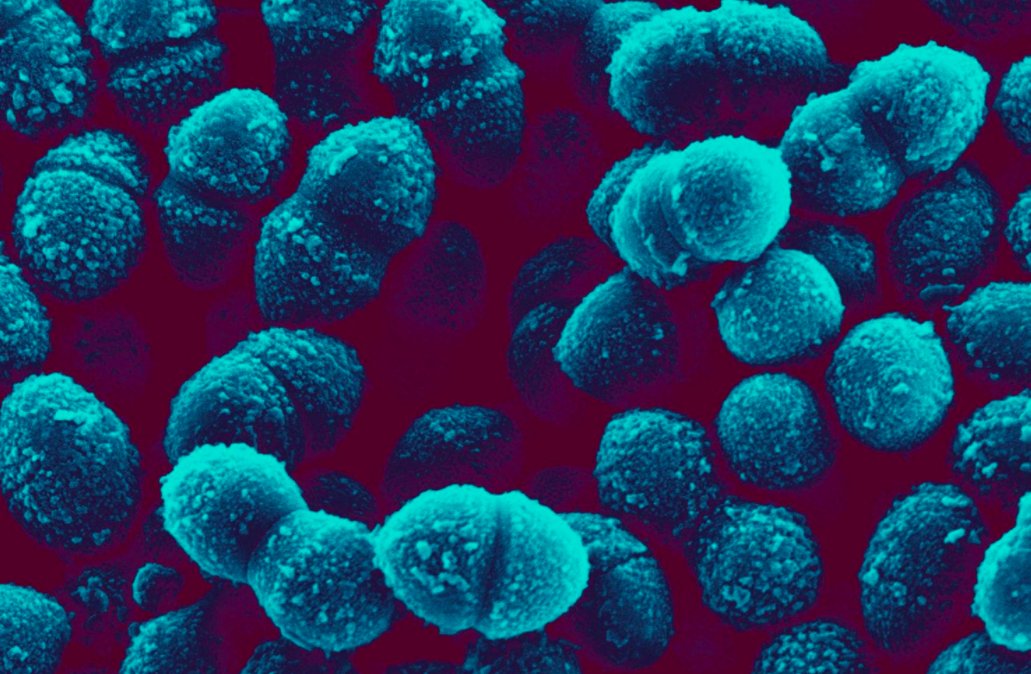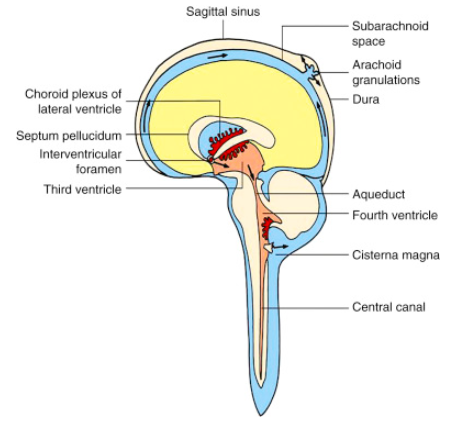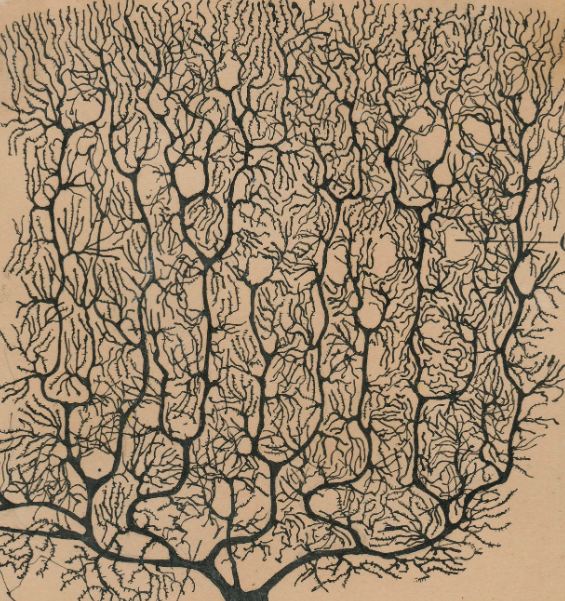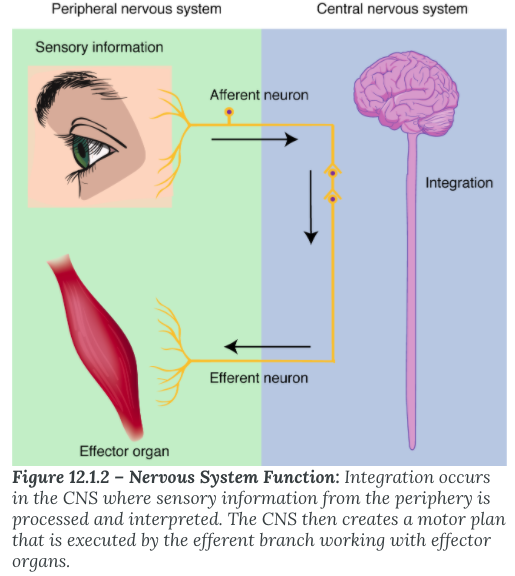Ever wonder why Wilson disease causes Kayser-Fleischer rings to form in the cornea?
Let’s explore the history, mechanism, and implications of the infamous ring.
#medtwitter #tweetorial
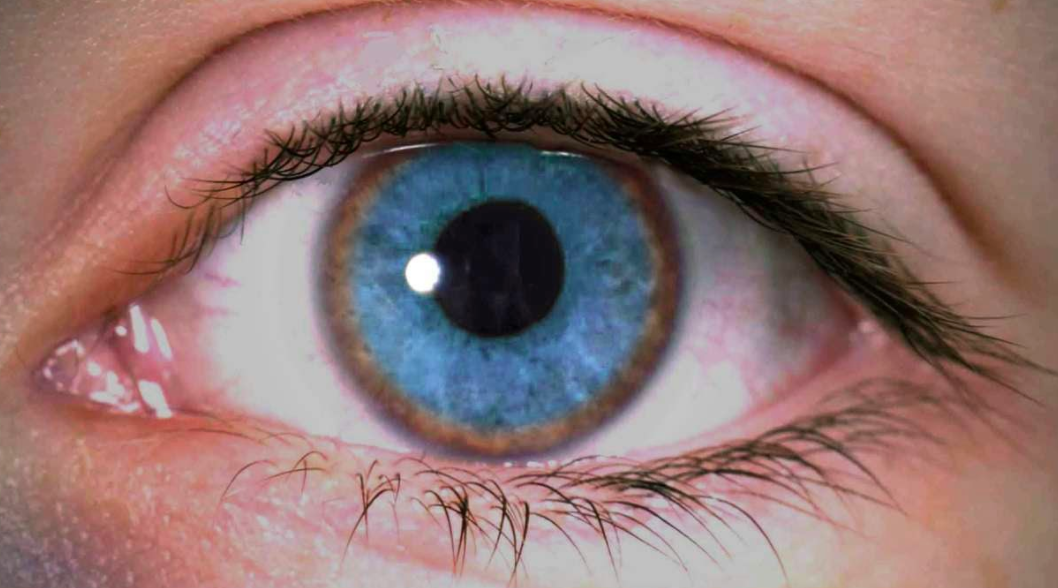
First, a quick rundown on Kayser-Fleischer (KF) rings:
🔹KF rings are characterized by dark circles at the periphery of the cornea.
🔹Though sometimes visible to the naked eye, they often require a slit lamp examination to be seen.
ncbi.nlm.nih.gov/books/NBK45918…
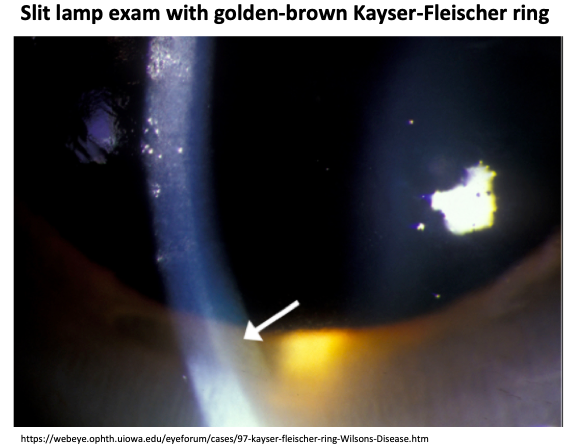
Next, let's review the pathophysiology of Wilson disease.
🔑 Wilson = inherited dysfunction of the ATP7B hepatic copper (Cu) transporter.
🔑 Instead of excretion in bile, excess Cu builds up in the liver, damaging hepatocytes and ⬆️ serum Cu levels.
pubmed.ncbi.nlm.nih.gov/20955957/
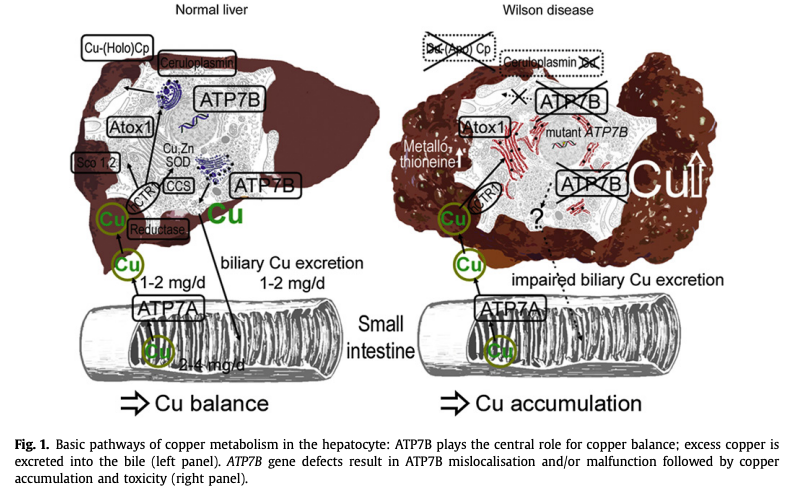
High serum levels lead to copper deposition in multiple organs, causing end-organ dysfunction.
Cirrhosis and neuropsychiatric deficits are hallmark disease manifestations.
ghr.nlm.nih.gov/condition/wils…
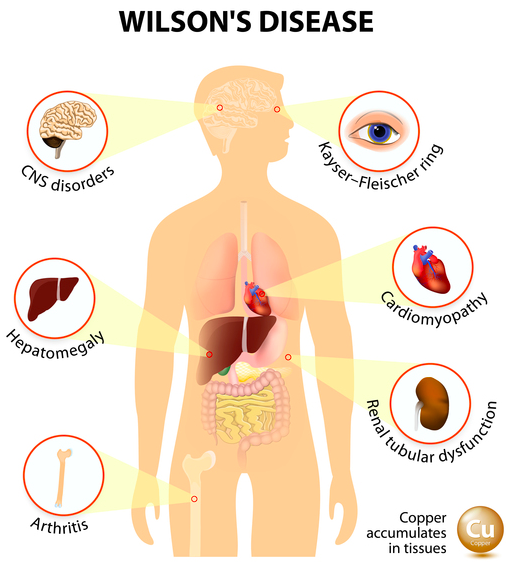
In 1902, 10 years before Wilson described the disease, Bernhard Kayser (a German physician) noted corneal rings in a patient w/ neurological symptoms.
Although he thought the patient had multiple sclerosis, he described what we now know as KF rings.
acnr.co.uk/2019/07/histor…
One year later (1903), a German ophthalmologist named Bruno Fleischer corroborated Kayser's findings in a case series, linking the corneal ring w/ a neurological disorder.
He also noted cirrhosis at autopsy, prefiguring Wilson's work a decade later.
acnr.co.uk/2019/07/histor…
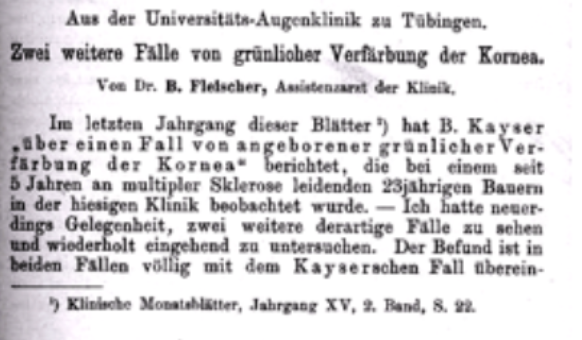
In 1912, the British neurologist Samuel Kinnier Wilson described the disorder that bears his name, referring to it as "progressive lenticular degeneration".
💥 Interestingly, his paper doesn't describe rings in the eyes as was noted a decade earlier.
academic.oup.com/brain/article-…
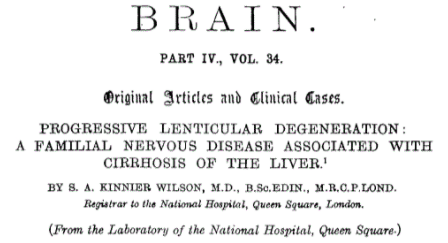
Now that we know how Kayser-Fleischer rings were described (and named), let's examine what actually comprises them.
First we need to quickly review corneal anatomy.
💡The cornea has 5 layers, bounded by epithelium and endothelium.
ncbi.nlm.nih.gov/pmc/articles/P…
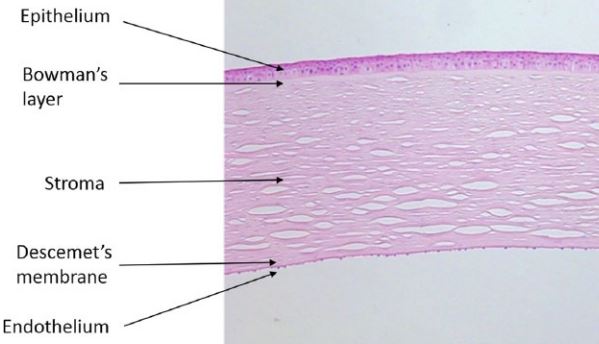
Descemet's membrane is a layer of basement membrane that supports the endothelial layer on the inner surface of the cornea.
This membrane is actually where KF rings localize, characterized by deposition of copper granules at its periphery.
pubmed.ncbi.nlm.nih.gov/4931248/
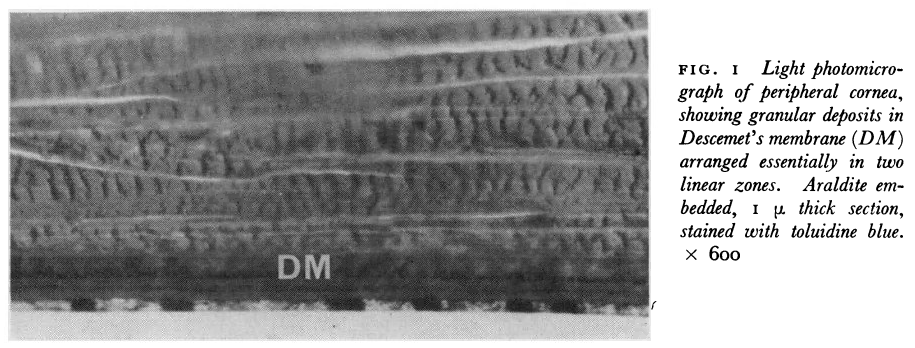
But why does copper accumulate specifically in Descemet's membrane, and why circumferentially (leading to the circular shape of the ring)?
Clue: early path. studies of the eyes of patients w/ Wilson disease found ⬆️ Cu levels in the aqueous humor.
pubmed.ncbi.nlm.nih.gov/6050251/
Aqueous humor flows from the posterior chamber of the eye to the anterior chamber, behind the cornea.
Within the anterior chamber, aqueous humor has swirling flow along its edges, draining into Schlemm's canal.
sciencedirect.com/science/articl…
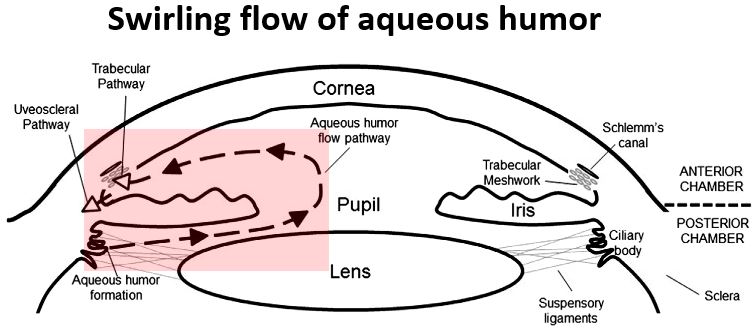
The circumferential location of KF rings in Descemet's membrane thus involves 2 factors:
🔑 ⬆️ Cu from aqueous humor crosses the corneal endothelium, incorporating into the membrane
🔑 Swirling aqueous humor flow ➡️ ring-shaped Cu deposits
sciencedirect.com/science/articl…
This telling case report supports an aqueous humor etiology for KF rings.
A patient w/ previous ocular trauma had ⬇️ aqueous humor formation in his right eye.
He later developed Wilson disease and had a KF ring, but only in the normal left eye.
ncbi.nlm.nih.gov/pmc/articles/P…

One final question. Are there clinical implications for KF rings besides being pathognomonic for Wilson disease?
KF rings do associate strongly w/ neuropsychiatric manifestations (>90% of patients w/ neuropsych involvement have KF rings vs 50% w/o).
pubmed.ncbi.nlm.nih.gov/9207280/
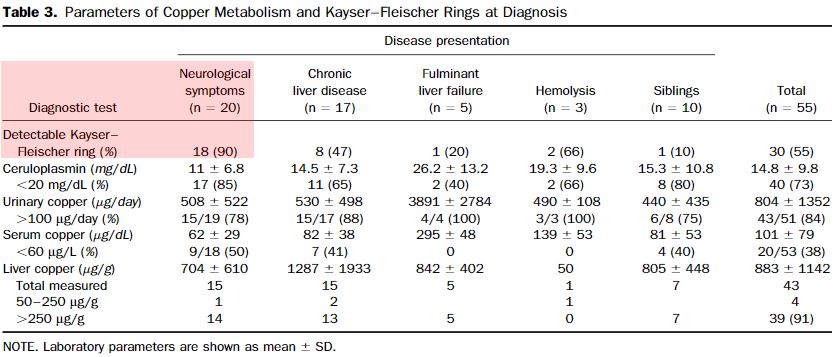
And, after chelation therapy with D-penicillamine, Kayser-Fleischer rings actually reliably resolve as serum (and central nervous system) copper levels fall!
pubmed.ncbi.nlm.nih.gov/5355260/
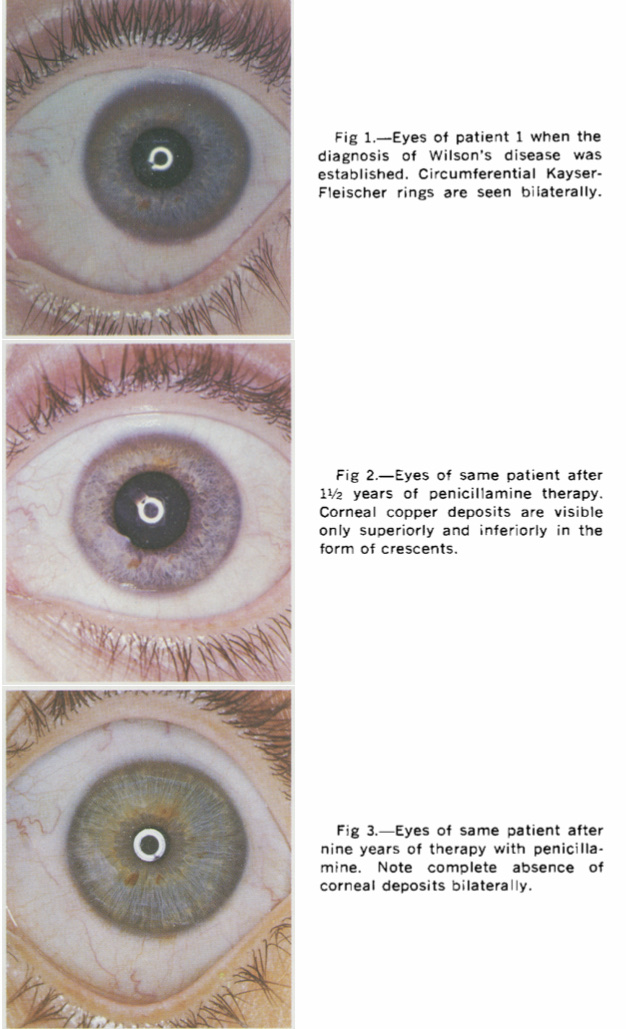
💡Kayser-Fleischer rings result from corneal Cu deposition in Descemet's membrane
💡KF rings were described before Wilson disease
💡Ring shape results from swirling aqueous humor flow
💡Associated w/ neuropsychiatric symptoms and resolve as serum Cu levels ⬇️ w/ chelation


